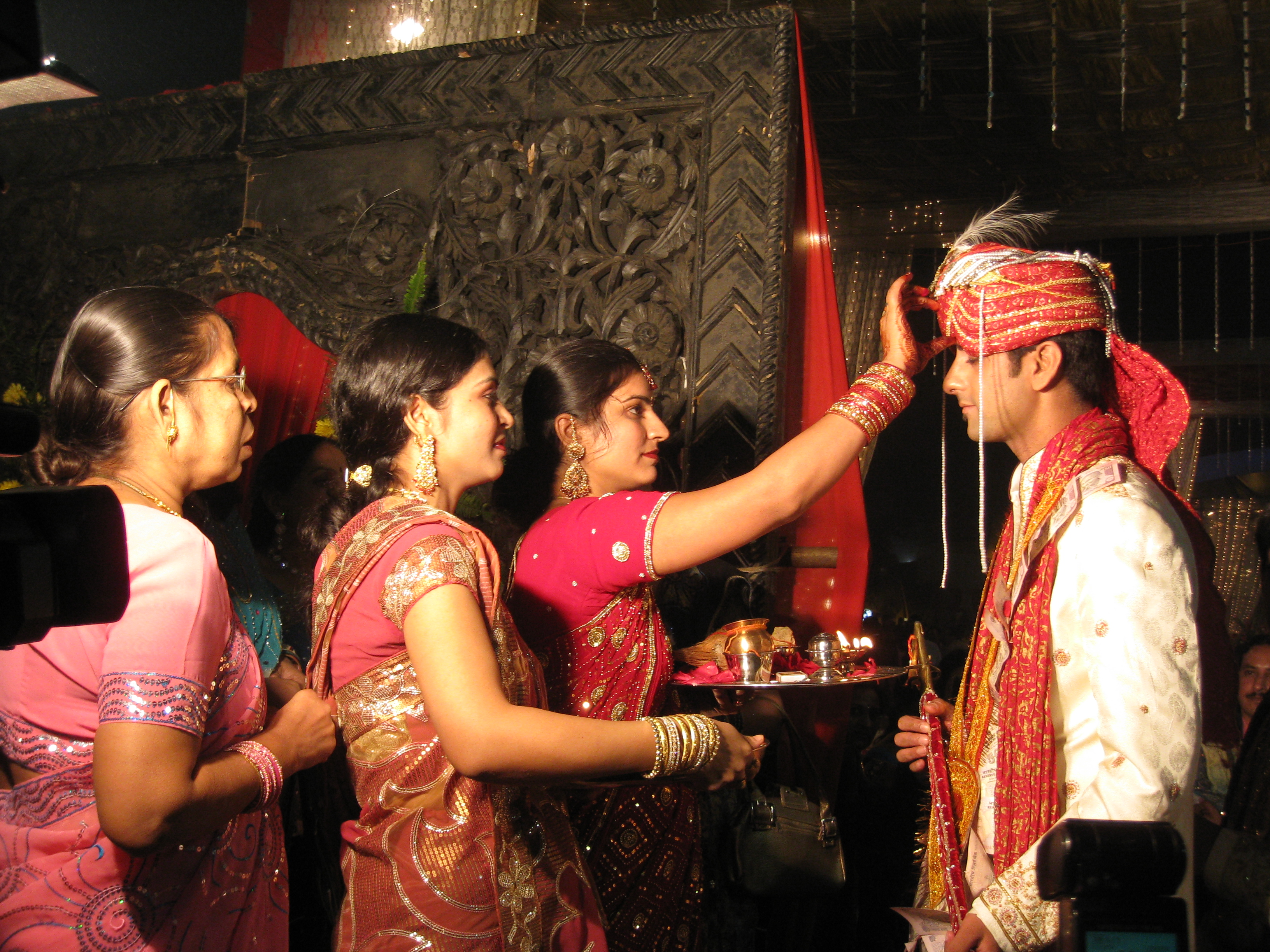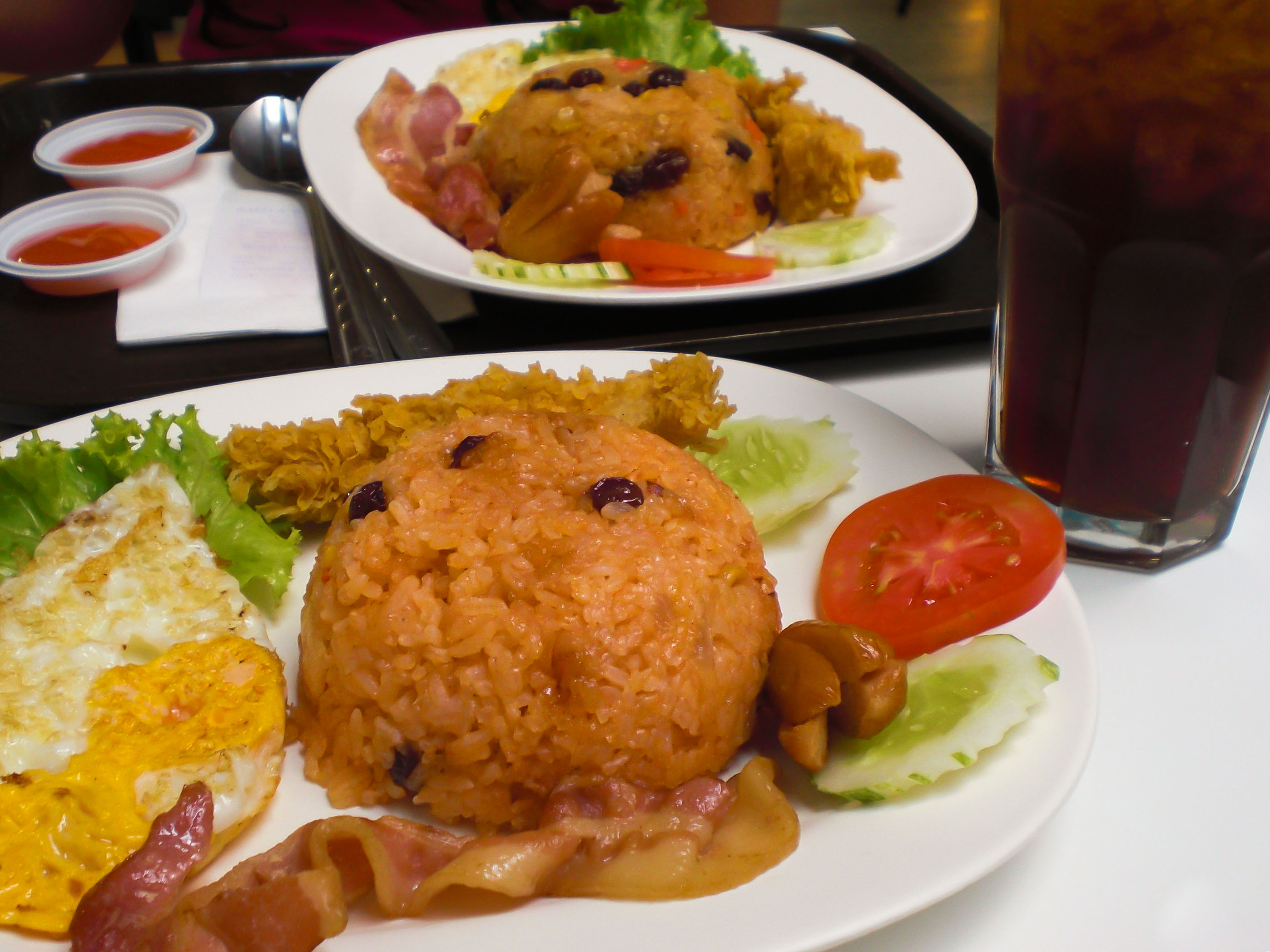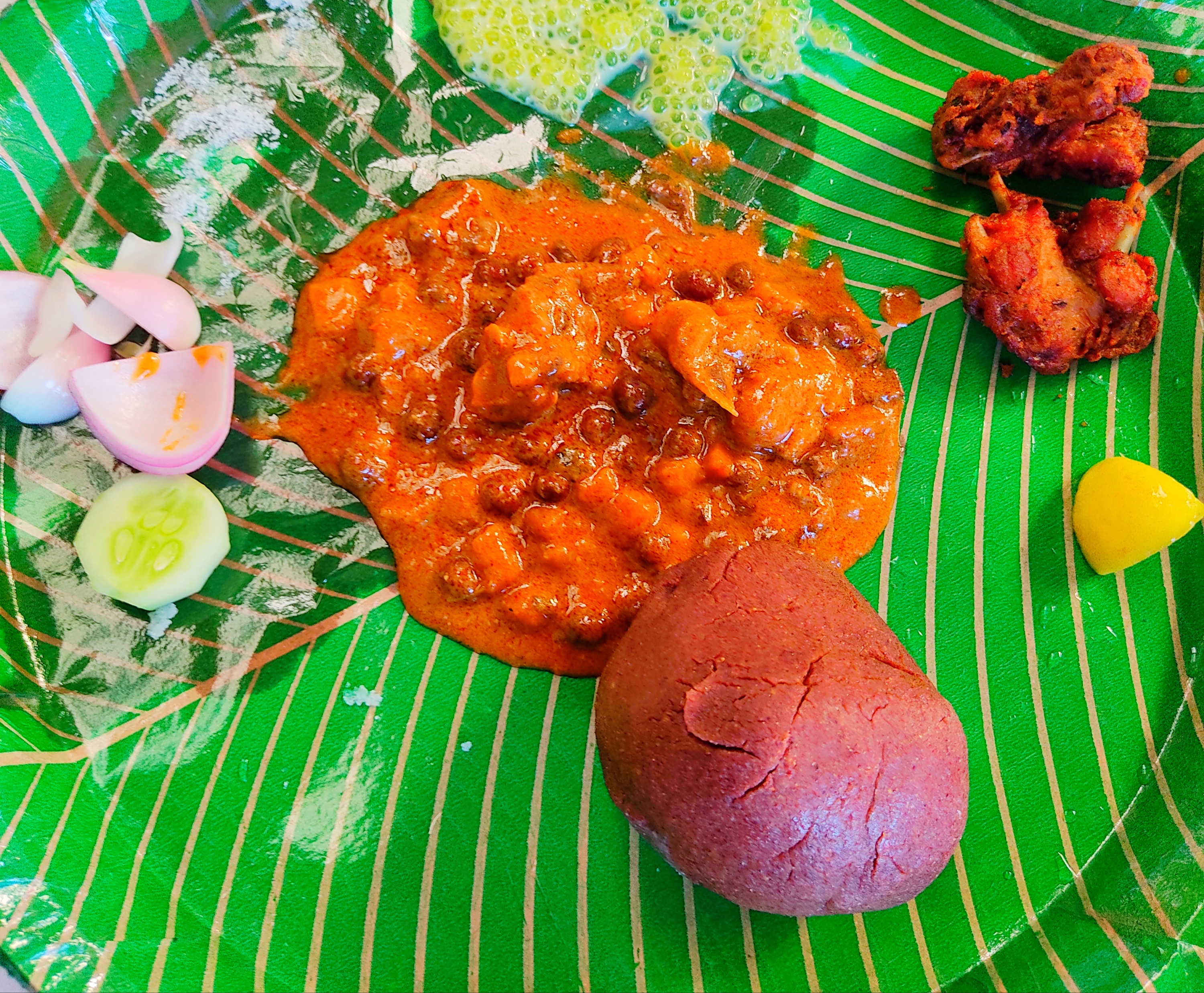|
Akki Rotti
''Akki rotti'' or ''akki roti'' is an Indian flatbread made from rice flour. It is a part of Karnataka cuisine. Versions ''Akki roti'' has at least two versions. The most common version is similar to the Maharashtrian flatbread '' thalipeeth''. In this version, rice flour is mixed with onions or grated carrots and green chillies. The resulting dough is flattened on a ''tava'' (griddle) or banana leaf and roasted on a stovetop. The cooked ''akki roti'' is served with unsalted butter, chutney, or pickle. In contrast with ''thalipeeth'', ''akki roti'' has a chewy texture. The second version is from Kodagu (a district in southern Karnataka) and is similar to the Indian flatbread '' bhakri''. In this version, cooked rice, rice flour and salt are mixed, resulting in a soft dough. The dough is flattened and cooked on a ''tava''. It is then roasted on an open flame, which chars its edges. The cooked Kodagu ''akki roti'' is served with butter or ''ghee'' and curry. ''Akki roti'' i ... [...More Info...] [...Related Items...] OR: [Wikipedia] [Google] [Baidu] |
Chutney
A chutney () is a spread typically associated with cuisines of the Indian subcontinent. Chutneys are made in a wide variety of forms, such as a tomato relish, a ground peanut garnish, yogurt, or curd, cucumber, spicy coconut, spicy onion, or mint dipping sauce. Etymology The word ''chutney'' derives from Hindustani/Urdu (Nastaliq: چٹنی, Devanagari: चटनी) ''chaṭnī'', deriving from चाटना ''chāṭnā'' 'to lick' or 'to eat with appetite'. In India, ''chutney'' refers to fresh and pickled preparations indiscriminately; however, several Indian languages use the word for fresh preparations only. Overview In India, chutneys can be either made alongside pickles that are matured in the sun for up to two weeks and kept up to a year or, more commonly, are freshly made from fresh ingredients that can be kept a couple of days or a week in the refrigerator. In South India, Chutneys are also known as ''Pachadi'' (, , , , ) which generally refers to t ... [...More Info...] [...Related Items...] OR: [Wikipedia] [Google] [Baidu] |
Ghee
Ghee is a type of clarified butter, originating from South Asia. It is commonly used for cooking, as a Traditional medicine of India, traditional medicine, and for Hinduism, Hindu religious rituals. Description Ghee is typically prepared by simmering butter, which is obtained by churning cream, skimming any impurities from the surface, then pouring and retaining the clear liquid fat while discarding the solid residue that settles at the bottom. Spices can be added for flavor. The texture, color, and taste of ghee depend on the quality of the butter, the milk used in the process, and the duration of boiling. Etymology The word ''ghee'' is borrowed from the Hindi word (''ghī''), which comes from (', ) 'clarified butter', from the root , , 'to sprinkle'; it is cognate with the Ancient Greek word (, 'rubbed, anointed'), from which the English word ''Christ'' is derived. In Hinduism Traditionally, ghee is made from bovine milk, either Cattle, cow or water buffalo, and has ... [...More Info...] [...Related Items...] OR: [Wikipedia] [Google] [Baidu] |
South Asian Cuisine
South Asian cuisine includes the traditional cuisines from the modern-day South Asian republics of Bangladesh, India, Maldives, Nepal, Pakistan and Sri Lanka, also sometimes including the kingdom of Bhutan and the emirate of Afghanistan. Also sometimes known as Desi cuisine, it has been influenced by and also has influenced other Asian cuisines beyond the Indian subcontinent. Staples and common ingredients Chapati, a type of flat bread, is a common part of meals to be had in many parts of the Indian subcontinent. Other staples from many of the cuisines include rice, roti made from atta flour, and beans. Foods in this area of the world are flavoured with various types of chilli, black pepper, cloves, and other strong herbs and spices along with the flavoured butter ghee. Ginger is an ingredient that can be used in both savory and sweet recipes in cuisines from the subcontinent. Chopped ginger is fried with meat, and pickled ginger is often an accompaniment to boiled rice. Ginge ... [...More Info...] [...Related Items...] OR: [Wikipedia] [Google] [Baidu] |
Indian Cuisine
Indian cuisine consists of a variety of regional and traditional cuisines native to the Indian subcontinent. Given the diversity in soil, climate, culture, ethnic groups, and occupations, these cuisines vary substantially and use locally available spices, herbs, vegetables, and fruits. Indian food is also heavily influenced by religion, in particular Hinduism and Islam, cultural choices and traditions. Historical events such as invasions, trade relations, and colonialism have played a role in introducing certain foods to India. The Columbian exchange, Columbian discovery of the New World brought a number of new vegetables and fruits. A number of these such as potatoes, tomatoes, Chili pepper, chillies, peanuts, and guava have become staples in many regions of India. Indian cuisine has shaped the history of international relations; the spice trade between India and Europe was the primary catalyst for Europe's Age of Discovery. Spices were bought from India and traded around ... [...More Info...] [...Related Items...] OR: [Wikipedia] [Google] [Baidu] |
Hindu Cuisine
Hindus (; ; also known as Sanātanīs) are people who religiously adhere to Hinduism, also known by its endonym Sanātana Dharma. Jeffery D. Long (2007), A Vision for Hinduism, IB Tauris, , pp. 35–37 Historically, the term has also been used as a geographical, cultural, and later religious identifier for people living in the Indian subcontinent. It is assumed that the term ''"Hindu"'' traces back to Avestan scripture Vendidad which refers to land of seven rivers as Hapta Hendu which itself is a cognate to Sanskrit term ''Sapta Sindhuḥ''. (The term ''Sapta Sindhuḥ'' is mentioned in Rig Veda and refers to a North western Indian region of seven rivers and to India as a whole.) The Greek cognates of the same terms are "''Indus''" (for the river) and "''India''" (for the land of the river). Likewise the Hebrew cognate ''hōd-dū'' refers to India mentioned in Hebrew BibleEsther 1:1. The term "''Hindu''" also implied a geographic, ethnic or cultural identifier for people ... [...More Info...] [...Related Items...] OR: [Wikipedia] [Google] [Baidu] |
Indian Breads
Indian breads are a wide variety of flatbreads and crêpes that are an integral part of Indian cuisine. Their variation reflects the diversity of Indian culture and food habits. Ingredients Most flatbreads from northern India are unleavened and made primarily from milled flour, usually atta or maida, and water. Some flatbreads, especially paratha, may be stuffed with vegetables and layered with either ghee or butter. In Maharashtra and Gujarat, breads are also made from grains like jowar (''Sorghum bicolor''), ragi (''Eleusine coracana''), ''rice'' and bajra (pearl millet), and are called "rotla" in Gujarat and "bhakri" in Maharashtra. Most Indian breads make use of the yeast spores in the atmosphere for fermentation. Preparation In northern India, a dough of the main ingredient is prepared and flattened by rolling. Most Indian breads, such as roti, kulcha and chapati, are baked on '' tava'', a griddle made from cast iron, steel or aluminum. Others such as puri and bhatur ... [...More Info...] [...Related Items...] OR: [Wikipedia] [Google] [Baidu] |
List Of Rice Dishes
This is a list of rice dishes from all over the world, arranged alphabetically. Rice is the seed of the monocot plants ''Oryza sativa'' (Asian rice) or ''Oryza glaberrima'' (African rice). As a cereal, cereal grain, it is the most widely consumed staple food for a large part of the world's human population, especially in Asia and the West Indies. It is the grain with the second-highest worldwide production, after maize (corn), according to data for 2010. List by country Unsorted * Aiwowo * Bagoong fried rice * Buttered rice * Insalata di riso * Kanika (food), Kanika * KFC rice * Lentil rice * Mutabbaq samak * Sayadieh See also * Arabic rice – a pilaf preparation using rice and vermicelli noodles * List of fried rice dishes * List of rice beverages * List of rice varieties * List of tortilla-based dishes * Pakistani rice dishes References {{Lists of prepared foods Rice dishes, * Lists of foods by type, Rice dishes Korean cuisine-related lists, Rice dishes World cuisin ... [...More Info...] [...Related Items...] OR: [Wikipedia] [Google] [Baidu] |
List Of Indian Breads
Indian breads are a wide variety of flatbreads and crêpes that are an integral part of Indian cuisine. Their variation reflects the diversity of Indian culture and food habits. Ingredients Most flatbreads from northern India are unleavened and made primarily from milled flour, usually atta or maida, and water. Some flatbreads, especially paratha, may be stuffed with vegetables and layered with either ghee or butter. In Maharashtra and Gujarat, breads are also made from grains like jowar (''Sorghum bicolor''), ragi (''Eleusine coracana''), ''rice'' and bajra (pearl millet), and are called "rotla" in Gujarat and "bhakri" in Maharashtra. Most Indian breads make use of the yeast spores in the atmosphere for fermentation. Preparation In northern India, a dough of the main ingredient is prepared and flattened by rolling. Most Indian breads, such as roti, kulcha and chapati, are baked on ''tava'', a griddle made from cast iron, steel or aluminum. Others such as puri and bhatura ar ... [...More Info...] [...Related Items...] OR: [Wikipedia] [Google] [Baidu] |
Pathiri
Pathiri (pronounced ) is a pancake made of rice flour. It is part of the local cuisine among the Mappilas of Malabar region in Kerala State of Southern India. Today, pathiri is still a popular dish among the Muslims in Kerala. See also * Kinnathappam * Kalathappam * Alsa * Pashti * Cuisine of Kerala * Arab Influence on Kerala: Malik ibn Dinar * List of Indian breads Indian breads are a wide variety of flatbreads and crêpes that are an integral part of Indian cuisine. Their variation reflects the diversity of Indian culture and food habits. Ingredients Most flatbreads from northern India are unleavened and ... References External links Flatbreads Indian breads Indian rice dishes Kerala cuisine Pancakes Rice breads {{India-cuisine-stub ... [...More Info...] [...Related Items...] OR: [Wikipedia] [Google] [Baidu] |
Bhakri
Bhakri () is a round flatbread often eaten in the cuisines of the states of Maharashtra, Gujarat, Rajasthan, and Karnataka in India. Bhakri is prepared using jowar or bajra, which is coarser than a regular wheat chapati. Bhakri can be either soft or hard in texture, unlike khakhra in respect to hardness. Grains and variants Different types of millet are the common grains used for making bhakris. These millet bhakris are popular in the Deccan plateau regions of India (Maharashtra and Northern Karnataka) as well as the semi-arid regions of Rajasthan. In the coastal Konkan and Goa regions of western India rice flour is used for making bhakri. # Jowar bhakri – Jowar bhakris are the most common type of bhakri. The dough is prepared by mixing jowar flour with hot water and then flattened by hand. # Bajra bhakri – Bajra bhakris are mainly prepared in winter, especially near the festival of Sankranti. The preparation is similar to jowar bhakris. # Makai bhakri – Cornmeal bhakr ... [...More Info...] [...Related Items...] OR: [Wikipedia] [Google] [Baidu] |
Thalipeeth
Thalipeeth is a savoury multi-grain flatbread popular in Western India, particularly in the state of Maharashtra. The flour for thalipeeth, called ''bhajanee'', is prepared from roasted grains, legumes and spices. The ingredients include grains such as rice, wheat, bajra, and jowar; legumes such as chana, and urad; and spices, most commonly coriander and cumin seeds. When preparing the dough, other ingredients such as onion, fresh coriander, other vegetables and spices are added. Thalipeeth is usually served with butter (preferably made from water buffalo milk), ghee, or yogurt. While the dish is popular in Maharashtra it is especially popular in Marathwada, Telangana and North Karnataka. (All 3 regions were previously part of Hyderabad State) In a variation from bhajanee, flour made from tapioca (sabudana) and rajgira (amaranth) is used to make a thalipeeth on Hindu fasting days. See also *List of Indian breads Indian breads are a wide variety of flatbreads and crêpes th ... [...More Info...] [...Related Items...] OR: [Wikipedia] [Google] [Baidu] |
Cuisine Of Karnataka
Dating back to the Iron Age, Karnataka’s cuisine is said to be one of the oldest surviving in the country. Karnataka cuisine includes the cuisines of the different regions and communities of the Indian state of Karnataka, namely, Uttara Karnataka cuisine, Dakshina Karnataka cuisine, Udupi cuisine, Mangalurean cuisine, Kodava cuisine, Saraswat cuisine, Mangalurean Catholic cuisine and Navayath Muslim cuisine. * Avalakki - Flattened parboiled rice cooked with spices. In Karnataka avalakki can be eaten with majjige or Gojju * Raagi Mudde -It is very popular with the rural Karnataka. Eaten this with Bassaaru and Upasaaru. *Upasaaru - Simple sambar. It is prepared with salt, water, grams, vegetables and some chillies. * Bassaaru - Prepared by using decanted water of dal and greens * Mysore Pak - Very popular sweet dish which is prepared by using gram flour and ghee * Bisi Bele Bath- is a spicy rice based dish. It is originated in Mysore, Karnataka and from there spr ... [...More Info...] [...Related Items...] OR: [Wikipedia] [Google] [Baidu] |






